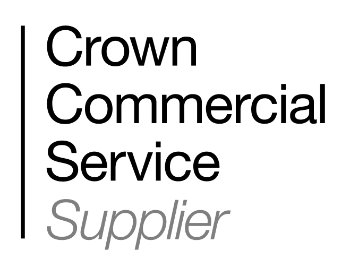For anyone who relies on Google Analytics to track user activity on a website or mobile app, you are no doubt aware of the arrival of Google Analytics 4. What may be less obvious is what impact this arrival will really have and what you need to do to be ready.
First, a bit of background…
GA4 is the fourth (hence the 4!) version of the popular web analytics platform. It takes over from the outgoing third generation, Universal Analytics. GA4 has already been available to use for a couple of years, whilst Google has been developing it, but the transition will become complete on 1st July 2023 when Universal Analytics is finally sunsetted, i.e., retired.
On this date, Universal Analytics will stop collecting any data and GA4 will become your sole option for Google Analytics tracking.
GA4 is a step-change in the way your data is constructed and how it can be reported. It offers new and improved features for tracking user behavior and measuring website performance. But it will require preparation!
-
Flexible Analysis
- GA4 adds flexibility by simplifying the way your data is constructed, for example, stripping away the distinction between page views and events, and the rigidity of predefined dimensions. Instead, it uses simple pairings of ‘Events’ and ‘Parameters’ to capture user activity, with Events representing the actual hit/interaction, and Parameters the complimentary values and labels that can be sent with each hit.
-
Improved User-centric Tracking
- GA4 introduces a new model for tracking user behavior that focuses on user journeys rather than individual sessions. This allows you to get a better understanding of how users interact with your website over time and across multiple devices.
-
Enhanced Cross-platform Capabilities
- With GA4, you can track user behavior across multiple platforms, including web, mobile, and even offline. This means you can get a more comprehensive view of your audience and how they engage with your brand.
-
More Accurate Data Collection
- GA4 uses a new event-based tracking system that allows for more accurate data collection and analysis. This means you can get more detailed insights into user behavior and make more informed decisions.
-
Advanced Machine Learning Capabilities
- GA4 comes equipped with advanced machine learning capabilities that allow you to identify patterns and trends in your data automatically. This can help you to uncover insights that you may have missed with other analytics tools.
-
Automatic Event Tracking
- GA4 automatically collects data about more events out-of-the-box compared to Universal Analytics. While events such as outbound clicks, scrolls, site searches, form submissions, YouTube video interactions and file downloads previously needed additional configuration, these events are now tracked automatically.
The good news is that, for those who haven’t already made the jump to GA4, Google is now in the process of automatically creating GA4 properties for you so that your tracking should continue. If you use a standard, out-of-the box Google Analytics setup – gtag code on your site and standard reporting - this will get you up and running with the basic data. In fact, you may find some nice extra data being captured, such as file downloads.
However, if you have already embraced the additional possibilities of Google Analytics, there is likely some additional work you will need to consider to fully migrate and make the seamless transition in July. In particular, if any of the following apply…:
- You use Google Tag Manager to deploying tracking tags for Google Analytics
- You have (in Universal Analytics) or require customised tracking of user interactions that is specific to your site or your KPIs
- You connect Google Analytics to automated reporting platforms, such as Google Looker Studio
- You want to understand the data you now have available to you, which should be everyone
… read on!
On the 1st July 2023, Universal Analytics will stop collecting any data and GA4 will become your sole option for Google Analytics tracking.
"Books will be written on what can be done to configure you GA4 platform, but at a high level*, we’d recommend the following steps to get started:
Create/check and configure a GA4 property
- Log in to your Google Analytics account, head to the Admin screens and click on the drop down in the ‘Property’ column.
- If you see a GA4 property, you can configure it further using the ‘Setup Assistant’ option underneath. Follow the on-screen sections to complete any steps that are relevant to your Google Analytics setup.
- If you don’t see a GA4 property, choose the equivalent Universal Analytics property and then use the ‘GA4 Setup Assistant’ to get started.
- Also, check out your ‘Data Settings’ menu in the ‘Property’ column to configure, for example, what is considered ‘internal traffic’ or how long user specific data should be retained.
Configure your Data Stream & Automatic Event Detection
- When you create a new GA4 property, you will be prompted to create a new ‘Data Stream’ for each ‘thing’, website or app, that you want to track.
- Click on each Data Stream and then ‘Enhanced Measurement’ to configure the events that GA4 will automatically track.
If you use Google Tag Manager (GTM), create a GA4 tag
- Login in to GTM, create a new tag of the type ‘Google Analytics: GA4 Configuration’, set a trigger to make sure it fires on all pages (that you want tracked) and ensure the option to send a page view is ticked. Publish the tag and it will begin sending all of your out-of-the box data to GA, including the new event data and page views.
N.B. At Moore-Wilson, we will almost always recommend using Google Tag Manager to implement your analytics, as this allows for easier and more in-depth tagging and tracking of events on your website.
Check and configure your conversions
- Head back to GA4’s admin screens and under the Property menu, either:
- choose ‘Events’ to mark a specific Event as representing a conversion
- choose ‘Conversions’ to set up new conversion to which you are going to send new data
- On the Event screen you can also modify your event labelling and create new events to send data to – see below.
Create key Explore reports
You may find that some of the classic reports that you are used to using in Universal Analytics are not pre-packaged for you in the ‘Reports’ screens in GA4. If so, head to the ‘Explore’ section in the main menu to recreate your key reports by combining the relevant dimensions and metrics.
Custom Event Tracking
Whilst you will get more user interaction tracking out-of-the-box, there are still plenty of interactions/events that are not automatically captured. For those, you may require some additional configuration to ensure that you get the most information possible from your tracking. Things to consider include:
- Clicks on email address links or telephone number links – these are often conversion points in their own right and important to capture
- Clicks on calls-to-action elements, such as buttons, or other internal links – these can be vital steps in conversion pathways and worth tracking to measure their effectiveness
- Form submission details – form submissions are tracked automatically, however, GA4 does not automatically differentiate between different forms on the same page. By creating specific tagging for individual forms, you can ensure you collect more accurately labelled data on form usage.
- User controls, such as filters or accordions – these are often deployed to boost user engagement so worth analysing in that context
- Reporting
GA4 provides more restricted standard reporting than Universal Analytics and so puts a greater emphasis on users constructing their own reports to meet their requirements. These reports, combining metrics, dimensions, filters, date ranges etc. can be built in a number of ways, including:
- GA4 Explore reports – built within Google Analytics itself, these are relatively easy to set up using all available GA data in situ; however, they do require viewers to be logged in to GA, they have limited design/layout options, and don’t allow custom fields.
- Google Looker Studio – (previously Data Studio) this platform allows users to create interactive and shareable web-based reports with completely customised design and layout, using data that is either pulling dynamically or cached from Google Analytics. These reports can remove any need to manually construct web activity or marketing reports where the data is being supplied by GA.
Universal Analytics Data Backup
Google’s current roadmap is to delete your old Universal Analytics after it has been sunsetted for six months, i.e., at the end of 2023. It is therefore vital to plan how you want to back that data up before that deadline, for example, manually exporting key reports to spreadsheets, using data feeds in Google Sheets, or other data platforms like Big Query.
At Moore-Wilson, we offer a range of one-off projects and/or ongoing assistance to help our clients make the migration to GA4. We offer detailed and hands-on assistance to deliver a smooth, complete transition and to ensure you get the most from the data that you now have available to you.
"I think I’m going to need some help with that!
GA4 Migration Projects
At Moore-Wilson, we offer a range of one-off projects and/or ongoing assistance to help our clients make the migration to GA4. We offer detailed and hands-on assistance to deliver a smooth, complete transition and to ensure you get the most from the data that you now have available to you.
Digital Insights Retainers
What’s more, with our Digital Insights Retainer, we can complete and manage your analytics set up, build a dynamic and interactive website report, and provide data-driven monthly insights and strategic recommendations to help maximise the return on your digital activities.
Please contact us today to hear more about how we can help.




- 60 St Martin's Lane
- Covent Garden
- London
- WC2N 4JS
- T: 020 7379 3300
- The Portway Centre
- Old Sarum
- Salisbury
- SP4 6EB
- T: 01722 335105
©Copyright Moore-Wilson Ltd 2024
